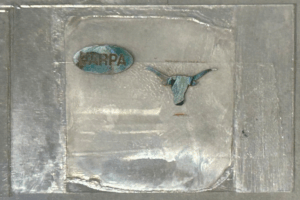Texas as we know it was born on March 6, 1836. The revolutionaries who seceded from Mexican authority and held out against a vastly larger Mexican army at the Alamo inspired thousands of others to fight for independence.
Today, Texans continue to take special pride in their independence, their uniqueness and even their rebelliousness against larger forces. Yes, Texans remember the Alamo, even if citizens from other parts of the United States do not.
What Texans often do not remember is that the martyrs at the Alamo included seven Tejanos of Mexican descent.
They were part of a population of about 4,000 Tejanos who lived north of the Nueces River and sought freedom from the central Mexican government, led by Antonio Lopez de Santa Anna. Many of the Tejanos had lived in present-day Texas longer than the 35,000 Anglos who moved more recently to the area.
Juan Seguin is a great example of the Mexican American contributions to the Texas Revolution. Born to Mexican parents, Seguin raised a company for the separatist army, served at the Alamo, and then fought at the Battle of San Jacinto where Anglo and Tejano soldiers defeated Santa Anna. Seguin then served as a member of the Texas republic’s Senate from 1837 to 1840 and as mayor of San Antonio from 1840 to 1841. He spent the rest of his life moving back and forth across the Texas border with Mexico, until his death in 1890.
The Battle of the Alamo and the independence of Texas were possible because of the vital contributions of Tejanos, and that has remained true ever since. In each subsequent war, economic boom and economic bust, Mexican-born labor and leadership have been central to the state.
Texas may be politically separate from Mexico, but it is deeply connected social, culturally and economically — as it was in 1836. The growth of the Hispanic population in the state during the early 21st century is a continuation of an old process.
The current anti-Mexican rhetoric about deporting immigrants and building walls is not only racist; it is an assault on what has made Texas great.
Texas is a frontier land that draws ambitious talent from all directions. It is an intensely diverse place that sits astride multiple cultures. Movement across the Mexican border is part of what makes Texas such an entrepreneurial place.
State and federal authorities surely must monitor the border to interdict criminals and other threats, but they must also recognize that some openness is essential for continued prosperity in the north. Texas needs new computer programmers, doctors and teachers — and many of them will come from across the Rio Grande.
Texas also needs to be a hospitable place where kindness, charity and piety encourage people to stay. All of these qualities rely on humanistic treatment of immigrants, not violent restrictions.
The Mexicans living today in Texas and other parts of the United States are central contributors to the nation’s economy. Deporting some of them, as a few politicians have advocated, would only trigger a labor shortage in key industries and a diminishment of talent in states such as Texas, where Mexican engineers, doctors, lawyers and other professionals lead many communities.
We not only need Mexicans, we need Mexican Americans to stay, get better educated and generate new wealth.
Remembering the Battle of the Alamo as an Anglo and Tejano event stays true to the facts and reinforces the correct lessons. Texas remains tied to Mexico, and immigrants from Mexico are part of Texas’ future, as they were part of its past.
The Alamo remains a mission as much as a fort, bringing different people together to appreciate their shared history and their joint future. March 6, 1836, was a triumph for immigrants, and Texas is their rightful home.
Jeremi Suri holds the Mack Brown Distinguished Chair for Leadership in Global Affairs at The University of Texas at Austin. He is the author and editor of numerous books, including “Liberty’s Surest Guardian: American Nation-Building from the Founders to Obama.”
A version of this op-ed appeared in the Houston Chronicle.
To view more op-eds from Texas Perspectives, click here.
Like us on Facebook.
New op-ed by @TheLBJSchool prof: Relevance of the Battle of the #Alamo
is still present today: https://t.co/bzU7j97pEO— Texas Perspectives (@TexPerspectives) March 7, 2016



